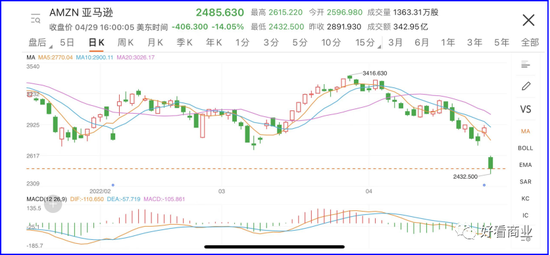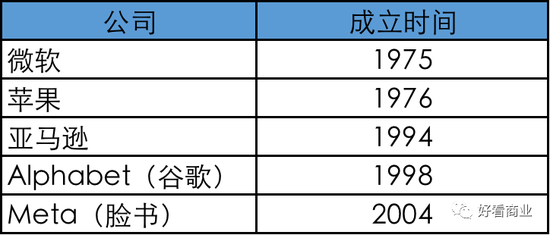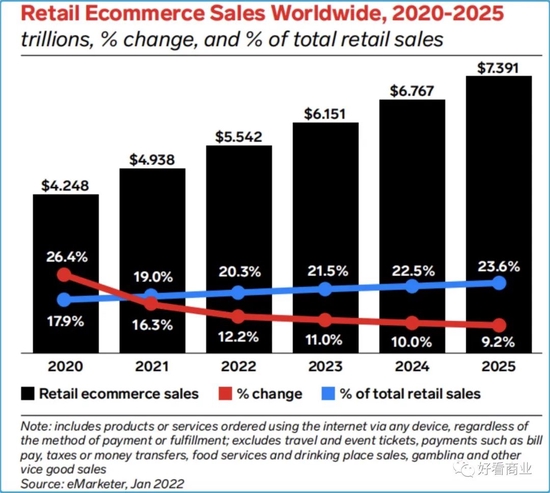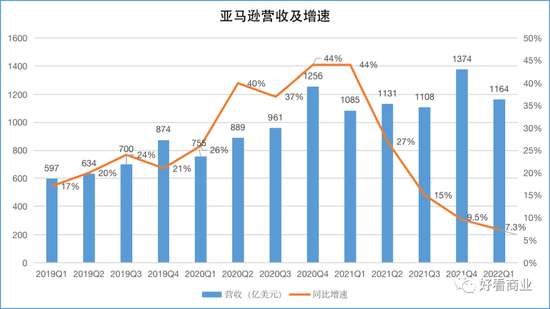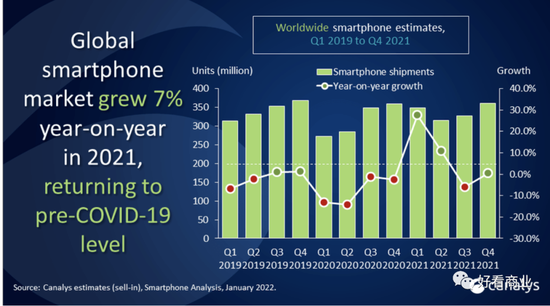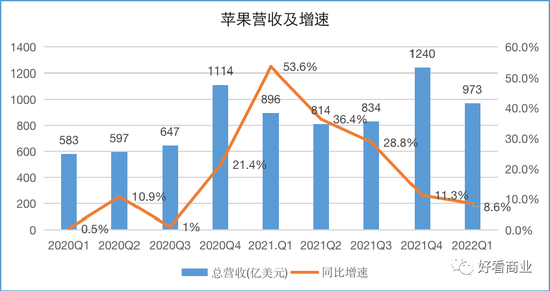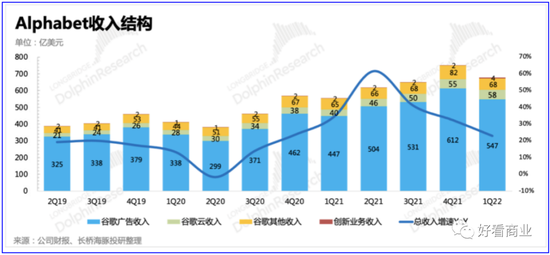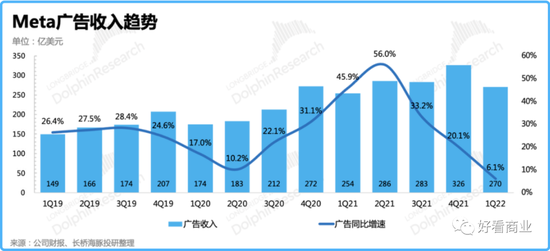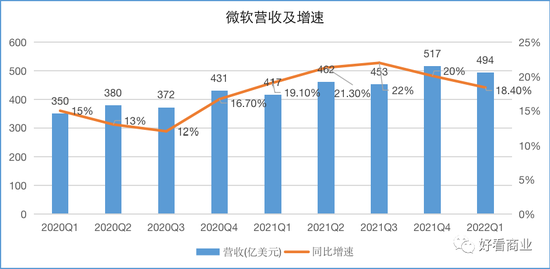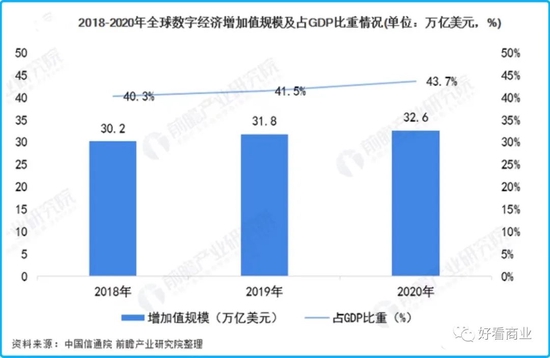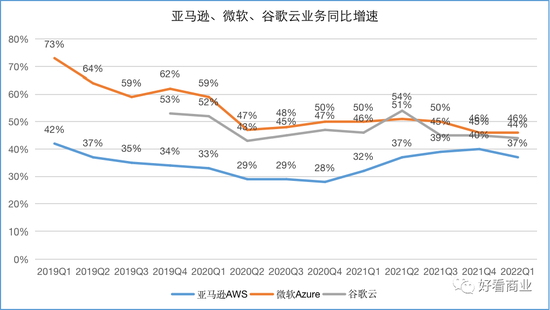Welcome to follow the WeChat subscription account of "Sina Technology": techsina
The global consumer Internet has entered the era of stock competition. Affected by the weak global consumption, the overall growth of e-commerce retail industry, intelligent hardware and online advertising is slowing down. This determines that the players among them compete more fiercely with each other, and the slowdown in growth is inevitable; Their second growth curve still needs to be improved.
Author | Zhou Yiwei Editor | Rest assured
Source: Goodlooking Business (ID: IGreatBI)
The past April was the "Black April" of American technology stocks, and pessimism spread.
Amazon plummeted 14% overnight on the last trading day of April. In the whole of April, its share price has dropped by 23.8%, the largest monthly decline since the 25.4% drop in January 2008.
It's a coincidence. The stock price of Google's parent company Alphabet also fell 18% in April, which was its worst month since 2008.
In April, the NASDAQ index dominated by technology stocks fell by 13.3%, the largest monthly decline since the 2008 financial crisis.
Behind this, the collapse of the performance of the technology giants is one of the key reasons.
Amazon Q1 financial report can be called "the whole army is destroyed". In this quarter, its revenue growth rate was lower than analysts' expectations, hitting the lowest growth rate in 20 years. Among them, online sales, subscription services and advertising business revenue were lower than analysts' expectations; The growth of cloud business slowed down. Q1 operating profit also fell short of analysts' expectations.
Alphabet's revenue grew by 23% year on year, of which the advertising business accounting for more than 80% grew by 22.3% year on year, both of which hit the lowest growth rate in five quarters.
It is conceivable that the market was disappointed that the former top students turned into poor students who failed in performance.
Amazon, which was founded in 1994, is now 28 years old, but it looks like it has entered middle age. Amazon is not alone in this regard.
In the past, people used FAAMG to refer to the five major technology giants in the US stock market - Facebook, Apple, Amazon, Microsoft and Google. Today, Facebook has changed its name to Meta, and Google has become Alphabet.
They have successfully crossed the Internet and mobile Internet. The oldest Microsoft is now 47 years old, and the youngest Meta is over 18 years old.
Judging from the Q1 financial report this year, the five major technology giants in the United States have shown signs of losing their momentum and slowing growth.
In addition, they all face new problems: the labor union organizations of employees have been set up, and the team is not easy to lead. The trade union shall negotiate with employees on behalf of them to strive for better salary and working environment. This means that technology giants have to pay a higher price.
A mid life crisis is coming quietly.
In the era of stock, it is becoming more and more stagnant
The five major technology giants in the United States mainly involve three major industries: consumption, advertising and enterprise services; Two keywords: consumer Internet and industrial Internet.
In general, the global consumer Internet is in the era of stock competition. Affected by global consumption weakness, the overall growth of e-commerce retail industry, intelligent hardware and online advertising is slowing down.
This determines that the players among them compete more fiercely with each other. In addition, the base is getting larger, and the growth rate will inevitably slow down.
According to the eMarketer report, in 2022, global e-commerce sales are expected to exceed 5 trillion dollars for the first time, accounting for 1/5 of the total retail sales; In 2025, this figure may exceed US $7 trillion.
However, from the perspective of growth rate, it will decline from 26.4% in 2020 to 12.2% in 2022, and the growth rate will decline to a single digit 9.2% in 2025.
Amazon has become the world's largest e-commerce retail platform, with net sales of $469.8 billion in 2021, of which the sales of goods reached about $241.8 billion. In 2021, Amazon will grow by 22% year on year, outperforming the global e-commerce market by 16.3%.
Amazon's growth rate dropped to 7.3% in Q1 this year. This is the lowest growth rate of Amazon in 20 years. In the same period last year, Amazon achieved 44% growth.
The international supply chain under the epidemic has become inefficient and chaotic, which has seriously affected the performance efficiency of Amazon, leading to a sustained slowdown in its online retail growth and a significant increase in freight costs.
With the rise of cross-border e-commerce newcomers such as SHEIN and Shopify, they are frantically competing with Amazon for the international market. In addition, the Russia Ukraine war has significantly affected Amazon's international business and revenue.
While the business growth is sluggish, Amazon itself is in a new investment period. In 2020 and 2021, the company doubled its investment in performance personnel, venues, etc., but the revenue scale of its retail business in 2021 only increased by 65% compared with 2019.
It still takes time for new investment to bring about new revenue and profit release. In addition to the continuous impact of the epidemic and the international macro situation, it seems that Amazon is difficult to make significant improvements in its financial and stock prices in the short term.
Global consumption is weak, and smart hardware is not immune. In the past two years, global smartphone shipments have maintained single digit growth or negative growth. In Q1 this year, the global smartphone market shipments fell by 7% year on year.
In contrast, Apple outperformed the market. In Q1 this year, Apple's revenue was 97.3 billion US dollars, up 8.6% year on year, higher than the 94 billion US dollars unanimously expected by Bloomberg. It was mainly driven by the iPhone and Mac, with year-on-year growth of 5.5% and 14.6% respectively.
On the whole, however, Apple's revenue growth in this quarter is still declining, hitting a record low in six quarters and falling below double digits for the first time.
Behind this, the growth rate of Apple's hardware business declined, with a year-on-year growth of only 6.6% in this quarter, the lowest in six quarters. The performance of iPad and intelligent wearables in this quarter was lower than market expectations.
Since 2022, global inflation has been high, and demand for smart phones, PCs and other electronic terminals has been weak. Several institutions have lowered their smartphone shipment forecasts.
According to the latest data of Omdia, the demand for smart phone displays in 2022 will decline by more than 11% compared with the actual shipment in 2021.
Next, the supply chain tension, lack of core and the conflict between Russia and Ukraine caused by the epidemic will also continue to have an impact on Apple's performance.
Apple executives predicted that the losses in the second quarter could be as high as $8 billion due to factors such as supply chain shortages and factory closures in China.
The epidemic has repeatedly caused serious damage to consumption, tourism and other industries. Their first move to preserve their strength may be to cut advertising and other expenses. This has curbed the growth of global online advertising.
Therefore, although people spent more time surfing the Internet during the epidemic, the surge in traffic did not bring about a sharp increase in advertising revenue.
According to the research of GIR, the global Internet advertising revenue will be about 298.3 billion dollars in 2021, and is expected to reach 638.5 billion dollars in 2028. During 2022-2028, the compound annual growth rate will be 12.4%. The compound annual growth rate from 2014 to 2018 was 15.7%.
Alphabet and Meta have long occupied the first and second positions in global Internet advertising. In 2021, their advertising revenues will reach US $209.4 billion and US $114.9 billion respectively.
Nevertheless, as the growth of online advertising market slows down and their respective bases grow larger, it is inevitable that the growth of advertising business of Alphabet and Meta will slow down.
Specifically, in Q1 2022, Alphabet's revenue will grow by 23% year on year, of which the advertising business accounting for more than 80% will grow by 22.3% year on year, both hitting the lowest growth rate since five quarters; The advertising business fell 10.6% in Q4 last year.
Advertising is the base of Meta's revenue, accounting for more than 96% of its current revenue. In Q1 this year, Meta's advertising revenue was $27 billion, up 6.1% year on year, lower than the market's expectation of $27.3 billion; The month on month decline was 17%. The decline in the growth rate of its advertising business has lasted for a year.
In addition to the slowdown in the growth of online advertising market, intensified competition is also a major factor leading to the slowdown in the growth of advertising revenue of Alphabet and Meta.
The global online advertising market is almost a zero sum game. Now, the number of players in this market is increasing. In 2021, new players such as Amazon, Apple and TikTok will accelerate the realization of their advertising business, which will be fierce.
Take TikTok for example. As of last September, its global MAU had exceeded 1 billion. The overall younger user group is more conducive to its commercialization.
According to Insider Intelligence, TikTok's advertising revenue is expected to reach $11 billion in 2022, up nearly 175% year on year. In addition to advertising, its live broadcast e-commerce business is also rapidly realized.
According to the data of Sensor tower, in Q1 2021, consumer spending on TikTok platform will be 821 million dollars, which is the highest income non game application in the world.
Although Alphabet and Meta have launched new products such as short video streaming media to cope with the competition from TikTok, this battle is difficult to end in a short time.
In contrast, Microsoft is the most stable one among the five major technology giants in the United States. For more than a year, its quarterly revenue has maintained a year-on-year growth of about 20%.
This is related to Microsoft's revenue sources. Among the three major businesses of Microsoft at present, the "productivity and business process" business dominated by Office and the smart cloud business with Azure as the core are mainly TOB businesses. At present, the total revenue contribution is more than 70%.
Among them, Azure's Q1 revenue was $11.45 billion, up 46% year on year. For the first time, its revenue scale exceeded the whole line of Office business, becoming Microsoft's business with the highest absolute value of revenue and the fastest growth rate.
Benefiting from the development of new generation information technology such as cloud computing, the traditional industry has accelerated its transformation to digital. According to the data of the Prospective Industry Research Institute, the scale of the global digital economy will continue to rise in 2018-2020, reaching US $32.61 trillion in 2020, accounting for 43.7% of GDP.
However, in the last three quarters, Microsoft's revenue growth also continued to decline. Microsoft's enterprise oriented office SaaS product, Office 365, entered the end of cloud based dividends, and revenue continued to slow.
As the base grows, the growth rate of Azure in this quarter also hit the lowest level in history. Smart cloud business with Azure as the core is the key to Microsoft's next growth.
Therefore, there is no era of enterprises, only the era of enterprises. In the rapidly changing science and technology field, each leader has been in the limelight for three or five years, and the transition between success and failure is particularly cruel. This is the power of the times.
In the face of the general environment and trend, the only constant thing for the giants is to constantly seek changes to achieve growth, or at least to remain invincible in the ebb and flow.
The second growth curve to be improved
Just as every middle-aged person hopes to do some sidelines to earn more income, the giants are also creating new growth points to obtain sustained growth momentum and sense of security.
Cloud business is the new growth hope of Microsoft, Amazon and Google (Alphabet).
In the past year or more, Microsoft Azure, Amazon AWS and Google Cloud have maintained a rapid growth rate of 30% - 50% every quarter.
In 2021, AWS accounted for 13.2% of Amazon's total revenue and 55.5% of its operating profit.
Microsoft Smart Cloud, with Azure as its core, had a total revenue of $67.8 billion and an operating profit of $30 billion last year, accounting for 36.7% and 38.2% of Microsoft's total revenue and total operating profit respectively.
In 2021, Google Cloud's revenue will reach 19.21 billion US dollars, accounting for 7.5% of the revenue. It is the second largest single business of Google's revenue. However, Google Cloud is still in a loss state, with an operating loss of more than $3.1 billion last year.
On the whole, the proportion of cloud business in the revenue of Amazon, Microsoft and Alphabet still needs to be improved, and it cannot serve as the real pillar of revenue at present.
In seeking new growth points, Meta hopes to take a road beyond cloud computing - Reality Labs, which includes VR/AR and the meta universe strategy.
In Q1 this year, Meta's Reality Labs had a revenue of $695 million, up 30.15% year on year. This revenue accounted for only 2.6%, far from the true second growth curve.
Apple's second growth point comes from Internet services. In Q1 this year, Apple's Internet service revenue reached 19.8 billion US dollars, accounting for 20.4% of the total revenue.
In recent years, Apple's service revenue has maintained a steady growth. In Q1 this year, with the slowdown of Apple's hardware revenue, the growth rate of its software services also declined, with a year-on-year growth of 17.3%, while the growth rate in previous quarters was more than 20%.
The team is hard to take
In addition to slowing performance, American technology giants are also facing new problems: trade union organizations are thriving.
On April 1, in an Amazon logistics warehouse called JFK8 on Staten Island, New York, Amazon employees voted to establish the first trade union in Amazon history with 55% of the support.
According to the U.S. labor law, if more than 50% of qualified employees vote to form or join a labor union, they can form a labor union, and then report to the National Labor Relations Commission for approval.
At present, Amazon has more than 1.6 million full-time and part-time employees worldwide, of which about 1.1 million are in the United States. It is the second largest private employer in the United States after Wal Mart.
However, over the years, Amazon employees have complained about the company. They are dissatisfied with the inflexible working hours and poor working environment.
Therefore, Amazon's blue collar employees (including warehouse employees, couriers, etc.) have been trying to establish a labor union, but they have failed because of Amazon's obstruction.
The first Amazon labor union's appeal is very clear: through collective bargaining, strive for better pay and benefits, working environment and longer rest time for employees.
Amazon is not the only American technology giant that is in trouble with trade unions.
According to the report of the Wall Street Journal in early April, Apple's retail staff are also stepping up their efforts to form their own trade unions to obtain higher salaries and share the company's development achievements.
Last January, Google's first labor union, the "Alphabet Labor Union", was announced to be established. Their New York Times published an article saying, "The trade union will work hard to ensure that workers understand what they are doing and get reasonable wages, without fear of being abused, retaliated and discriminated against.".
The New York Times reported at the beginning of last year that in the past few years, employee rights protection actions have swept through Silicon Valley.
The International Finance Daily quoted the data of the Labor Relations Commission of the United States as saying that from October 2021 to March 2022, the Commission received nearly 1200 petitions seeking union representatives, a year-on-year increase of 57%, the highest level in 10 years.
If the trade union organization in the science and technology industry continues to grow, it means that the technology giants will pay a higher price in human resources, and even the efficiency of employee management will be reduced because of the existence of trade unions. It will be difficult for them to achieve rapid development through brutal growth.
When the heavy rain comes, no leaf can be spared. What are the experiences of American technology giants worth learning from and thinking about by Chinese technology enterprises?
(Statement: This article only represents the author's view, not Sina.com's position.)

